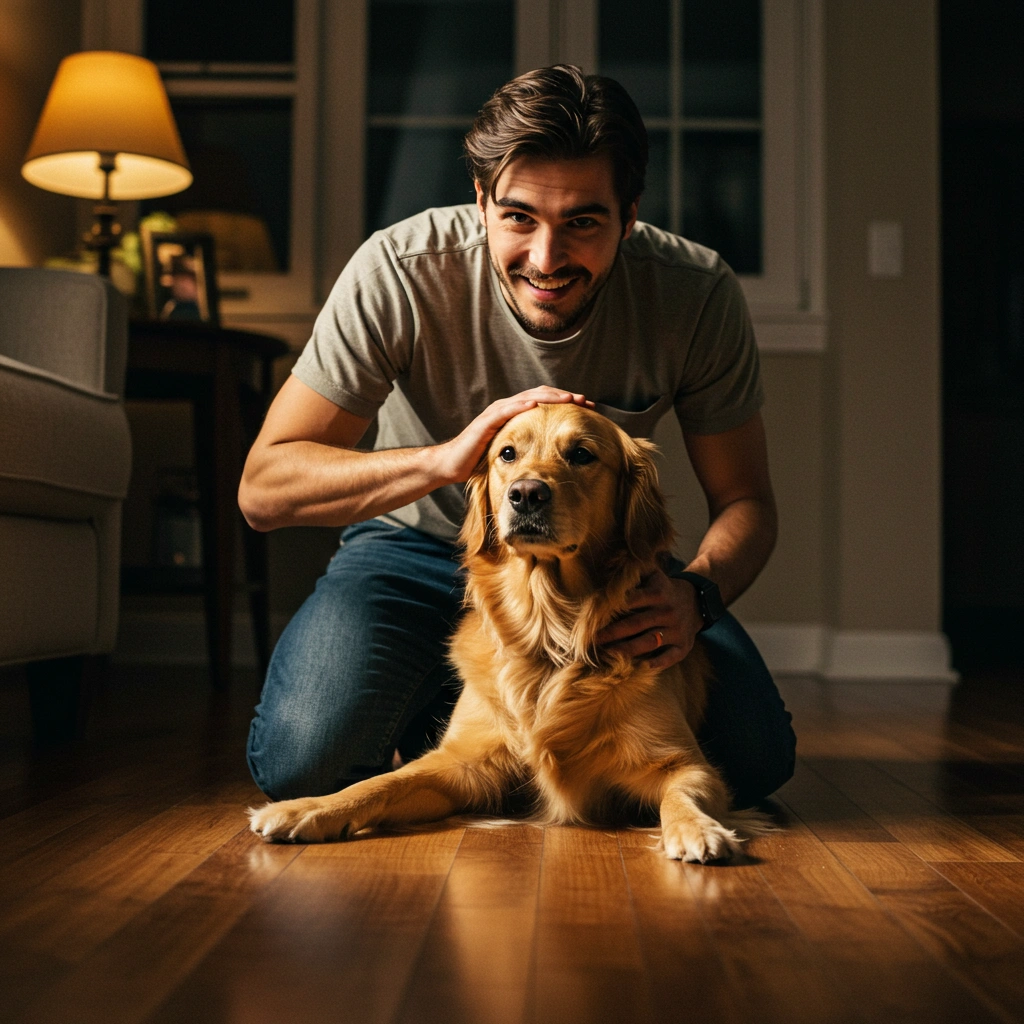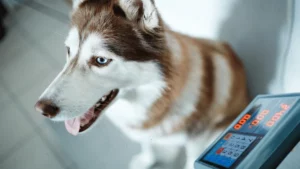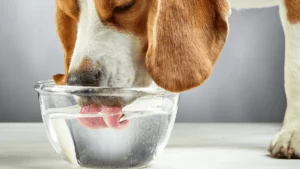11 Health Benefits of Good Dog Grooming
Regular dog grooming is more than just keeping your furry friend looking dapper. It plays a crucial role in maintaining their overall health and well-being.
Here are 11 health benefits of good dog grooming:
1. Skin Health:
Your dog’s skin is their largest organ, and it plays a crucial role in their overall health. Just like humans, dogs need proper care to maintain healthy skin. One of the most effective ways to do this is through regular grooming.
The Benefits of Brushing
- Prevents Skin Infections: Regular brushing helps remove dirt, debris, and loose hair from your dog’s coat, reducing the risk of skin infections. When dirt and debris are left on the skin, they can create a breeding ground for bacteria.
- Detects Skin Issues Early: Grooming gives you a chance to inspect your dog’s skin for signs of irritation, allergies, or parasites. By catching these problems early, you can get your dog the treatment they need to prevent further discomfort.
Beyond Brushing
While brushing is essential, it’s not the only aspect of grooming that benefits your dog’s skin. Regular baths, ear cleaning, and nail trimming can also contribute to overall skin health.
- Bathing: Bathing removes dirt, oils, and allergens from your dog’s coat and skin. Choose a gentle shampoo formulated for dogs to avoid irritating their skin.
- Ear Cleaning: Cleaning your dog’s ears regularly can help prevent ear infections, which can be painful and lead to skin problems.
- Nail Trimming: Long nails can cause discomfort and even injury to your dog. Regularly trimming their nails can help prevent skin irritation and infections.
When to See a Vet
If you notice any signs of skin problems, such as redness, itching, hair loss, or excessive scratching, it’s important to consult with your veterinarian. They can help diagnose the underlying cause and recommend appropriate treatment.
Regular grooming is a simple yet effective way to keep your dog’s skin healthy. By brushing their coat, bathing them regularly, and addressing other grooming needs, you can help prevent skin problems and ensure your furry friend’s overall well-being.
2. Coat Health:
Brushing your dog’s coat isn’t just about aesthetics; it’s a crucial component of their overall health and well-being. Regular grooming offers numerous benefits, from preventing discomfort to promoting healthy hair growth.
Why Brushing Matters
- Prevents Mats and Tangles: Mats and tangles can be incredibly uncomfortable for your dog, even causing pain. Regular brushing helps to detangle their fur and prevent these issues.
- Promotes Healthy Growth: Brushing stimulates blood flow to the skin, nourishing hair follicles and promoting healthy hair growth.
- Reduces Shedding: By removing loose hair during grooming sessions, you can significantly reduce shedding around your home, keeping your living space cleaner.
Tips for Effective Brushing
- Choose the Right Brush: The type of brush you use will depend on your dog’s coat type. For short-coated breeds, a slicker brush or rubber curry comb is ideal. Long-coated breeds may require a pin brush or dematting comb.
- Start Early: Introduce your puppy to brushing at a young age to make it a positive experience.
- Be Gentle: Avoid pulling or tugging at the fur, as this can be painful.
- Brush Regularly: The frequency of brushing will vary depending on your dog’s coat type and shedding patterns. However, aiming for at least a few times a week is generally recommended.
By incorporating regular brushing into your dog’s grooming routine, you can help them maintain a healthy, shiny coat and enjoy a more comfortable life. Remember, a happy dog is a healthy dog!
3. Ear Health:
Ear infections are a common problem for dogs, but they can be easily prevented with regular ear cleaning. By removing dirt, wax buildup, and moisture, you can significantly reduce the risk of bacterial or yeast infections.
Understanding the Importance of Ear Care
- Prevention of Infections: Regular ear cleaning helps to eliminate the ideal environment for bacteria and yeast to thrive, reducing the likelihood of infections.
- Enhanced Comfort: Ear infections can be incredibly uncomfortable for dogs, causing itching, scratching, and head shaking. Proper ear care can prevent discomfort and improve your dog’s quality of life.
- Early Detection of Issues: Regular inspections of your dog’s ears can help you identify potential problems early on, such as ear mites or foreign objects. This allows for timely veterinary intervention and prevents the infection from worsening.
How to Clean Your Dog’s Ears
- Gather Your Supplies: You’ll need a dog-specific ear cleaning solution, cotton balls, and a small flashlight.
- Examine the Ears: Gently lift your dog’s ears and inspect them for redness, swelling, discharge, or a foul odor.
- Clean the Ears: Using a cotton ball soaked in the ear cleaning solution, gently wipe away excess wax and debris from the outer ear canal. Avoid inserting the cotton ball too deeply, as this can damage the eardrum.
- Massage the Base of the Ear: Gently massage the base of the ear to help loosen any wax or debris.
- Dry the Ears: Use a clean cotton ball to gently dry the outer ear canal.
When to Consult a Veterinarian
If you notice any of the following signs, it’s important to consult your veterinarian:
- Excessive head shaking or scratching
- Pain or discomfort when the ears are touched
- Visible discharge from the ears
- A foul odor coming from the ears
Additional Tips
- Check Your Dog’s Ears Regularly: For dogs prone to ear infections, it’s recommended to check their ears at least once a week.
- Use a Dog-Specific Ear Cleaner: Human ear cleaning solutions may be too harsh for dogs.
- Avoid Cotton Swabs: Cotton swabs can push debris deeper into the ear canal and increase the risk of injury.
- Consider Professional Cleaning: If you’re unsure about cleaning your dog’s ears or if they have a history of infections, it’s best to have a veterinarian or professional groomer clean them.
By following these guidelines and taking care of your dog’s ears, you can help prevent infections, ensure their comfort, and maintain their overall health.
4. Dental Health:
Dental health is an often overlooked aspect of dog care. However, just like humans, dogs can suffer from dental problems if their teeth aren’t properly cared for.
One of the most effective ways to maintain your dog’s oral health is by brushing their teeth regularly. This helps to reduce plaque and tartar buildup, which can lead to serious dental issues.
The Benefits of Brushing Your Dog’s Teeth
- Reduces Plaque and Tartar: Regular brushing helps to remove plaque and tartar, preventing them from hardening and causing gum disease.
- Prevents Bad Breath: Bad breath is often a sign of dental problems. By keeping your dog’s teeth clean, you can help to eliminate bad breath.
- Reduces the Risk of Infection: Dental infections can spread to other parts of the body, so it’s important to prevent them. Regular brushing can help to reduce the risk of infection.
How to Brush Your Dog’s Teeth
- Start Early: It’s best to start brushing your dog’s teeth when they are a puppy. This will help them get used to the sensation.
- Use the Right Tools: Use a dog-specific toothbrush and toothpaste. Human toothpaste contains ingredients that can be harmful to dogs.
- Be Patient: Some dogs may resist having their teeth brushed at first. Be patient and reward them for good behavior.
- Start Slowly: Begin by gently touching your dog’s lips and gums. Gradually work your way up to brushing their teeth.
Additional Tips for Dental Care
- Feed a High-Quality Diet: A high-quality diet can help to promote dental health. Look for dog foods that contain ingredients that can help to scrape plaque off teeth.
- Provide Dental Chews: Dental chews can help to clean teeth and freshen breath.
- Schedule Regular Vet Checkups: Your vet can check your dog’s teeth for signs of dental problems and recommend professional cleanings if necessary.
By following these tips, you can help to keep your dog’s teeth healthy and free from disease. Remember, dental care is an important part of overall pet health.
5. Weight Management:
Is your furry friend starting to feel a little too fluffy? Beyond keeping your dog looking their best, grooming can actually be a powerful tool for weight management.
How Grooming Aids Weight Loss
- Hidden Exercise: Grooming sessions, especially those that involve brushing, can provide a surprising amount of exercise. As you work through your dog’s coat, you’re stimulating their muscles and getting their heart rate up.
- Mental Stimulation: Grooming isn’t just about physical activity; it’s also mentally engaging. The gentle touch and attention can help reduce stress and anxiety, which can contribute to healthy eating habits.
- Improved Mobility: Regular grooming can help identify potential mobility issues early on, such as arthritis or muscle strains. Addressing these problems can make it easier for your dog to stay active and maintain a healthy weight.
Tips for Grooming-Based Weight Management
- Make it Fun: Turn grooming sessions into playtime by using treats and praise. This will help your dog associate grooming with positive experiences.
- Incorporate Massage: Gently massage your dog’s muscles while grooming. This can help improve blood circulation and relax them.
- Consider Professional Grooming: If you’re struggling to groom your dog at home, consider taking them to a professional groomer. They can provide expert care and advice on weight management.
Remember: While grooming can be a helpful tool, it’s essential to combine it with other weight management strategies, such as regular exercise, a balanced diet, and veterinary check-ups.
By incorporating grooming into your dog’s routine, you can help them stay healthy, happy, and at a healthy weight.
6. Bonding:
Grooming is more than just keeping your dog looking their best. It’s a fantastic opportunity to strengthen your bond and show them how much you care. In this post, we’ll explore the many ways grooming can enhance your relationship with your furry companion.
The Importance of Quality Time
Dogs thrive on companionship and attention. Regular grooming sessions provide a dedicated time for you to interact with your dog, offering them the affection and reassurance they crave.
- Building Trust: Consistent grooming helps build trust between you and your dog. As they become comfortable with the process, they’ll associate it with positive experiences.
- Reducing Anxiety: Grooming can be a calming activity for dogs, especially if they’re prone to anxiety or stress. The gentle touch and attention can help them feel secure and relaxed.
Tips for a Bonding Grooming Session
- Create a Positive Environment: Choose a quiet, comfortable space where your dog feels safe. Use treats and praise to reward good behavior.
- Make it a Routine: Establish a regular grooming schedule to help your dog anticipate the experience.
- Incorporate Play: Combine grooming with playtime to make it more enjoyable for both of you.
- Be Patient: If your dog is hesitant or anxious, go slowly and gradually introduce new grooming techniques.
Beyond the Basics: Exploring Different Grooming Activities
- Massage: Gently massage your dog’s muscles while grooming to help them relax and improve their circulation.
- Nail Trimming: Regular nail trims can be uncomfortable for dogs, but with patience and positive reinforcement, it can become a less stressful experience.
- Ear Cleaning: Clean your dog’s ears regularly to prevent infections and discomfort.
- Dental Care: Brush your dog’s teeth to maintain good oral health and prevent gum disease.
Grooming is more than just a hygiene routine; it’s a valuable opportunity to strengthen your bond with your dog. By providing a positive and loving experience, you can create lasting memories and foster a deeper connection with your furry friend.
7. Stress Relief:
Is your furry friend feeling a bit anxious or stressed? You might be surprised to learn that regular grooming can provide a soothing and calming effect for your dog. Let’s explore how a simple grooming session can contribute to your pet’s overall well-being.
The Science Behind the Scritches
- Sensory Stimulation: Grooming involves gentle touching and stroking, which can activate your dog’s sense of touch. This sensory stimulation can release endorphins, the body’s natural feel-good chemicals, promoting a sense of relaxation.
- Bonding and Trust: Regular grooming sessions offer a wonderful opportunity to bond with your dog. The physical contact and positive reinforcement can strengthen the trust between you and your furry companion, making them feel more secure and at ease.
- Reduced Anxiety: The calming effects of grooming can help alleviate anxiety in dogs. For pets who may experience separation anxiety or fear-based behaviors, consistent grooming can provide a sense of comfort and security.
Tips for a Stress-Free Grooming Experience
- Start Early: Introduce your dog to grooming at a young age to help them become accustomed to the process.
- Make it Positive: Use positive reinforcement techniques, such as treats and praise, to associate grooming with positive experiences.
- Go Slow and Steady: If your dog is sensitive, start with short grooming sessions and gradually increase the duration as they become more comfortable.
- Choose the Right Tools: Invest in high-quality grooming tools that are gentle on your dog’s skin and coat.
- Create a Relaxing Environment: Play soft music or provide a calming scent, such as lavender, to create a soothing atmosphere during grooming sessions.
Remember, every dog is unique. What works for one may not work for another. If you notice that your dog is experiencing excessive stress or anxiety, consult with your veterinarian for personalized advice.
By incorporating regular grooming into your dog’s routine, you can help them feel more relaxed, confident, and content. So, grab your brush and let’s pamper your furry friend!
8. Parasite Prevention:
Fleas and ticks aren’t just a nuisance; they can also pose serious health risks to your beloved pet. These tiny parasites can transmit diseases like Lyme disease, anaplasmosis, and ehrlichiosis. That’s why it’s crucial to be vigilant about parasite prevention.
The Role of Grooming in Parasite Detection
One of the most effective ways to protect your pet from parasites is through regular grooming. Here’s why:
- Early Detection: Regular grooming allows you to inspect your pet’s coat for signs of fleas and ticks. By catching infestations early, you can take prompt action to prevent further spread and reduce the risk of disease transmission.
- Removal of Parasites: If you do find fleas or ticks, grooming can help you remove them manually before they have a chance to attach and feed.
- Reduced Risk of Infestation: Grooming can also help to reduce the overall risk of infestation by removing dirt, debris, and potential hiding places for parasites.
Tips for Effective Grooming
- Frequency: Groom your pet regularly, especially during peak flea and tick seasons.
- Thoroughness: Pay close attention to areas like the ears, neck, and underbelly, where parasites often hide.
- Use a Fine-Toothed Comb: A fine-toothed comb can help you effectively remove fleas and ticks from your pet’s coat.
- Check for Bites: Look for signs of bites, such as redness, itching, or hair loss.
- Consult Your Vet: If you notice any unusual symptoms or have concerns about parasite prevention, consult your veterinarian for advice.
Additional Prevention Measures
In addition to regular grooming, there are several other steps you can take to protect your pet from parasites:
- Use Preventative Medications: Talk to your vet about preventative medications like flea and tick collars or topical treatments.
- Treat Your Home: If your pet has a flea infestation, treat your home to eliminate eggs and larvae.
- Avoid High-Risk Areas: Be cautious about taking your pet to areas where parasites are known to be prevalent.
By combining regular grooming with other preventative measures, you can significantly reduce the risk of your pet becoming infested with fleas and ticks. Remember, early detection and prevention are key to keeping your furry friend healthy and happy.
9. Nail Care:
Just like humans, dogs require regular nail care to maintain their overall health and comfort. Overgrown nails can cause discomfort, mobility issues, and even pain. In this guide, we’ll explore the importance of dog nail care and provide practical tips to keep your furry friend’s paws healthy and happy.
Why is Dog Nail Care Important?
- Prevent Discomfort: Long nails can cause dogs to walk awkwardly, putting stress on their joints and muscles. This can lead to pain and discomfort.
- Avoid Injury: Overgrown nails can become cracked or split, increasing the risk of infection. Additionally, long nails can catch on objects, causing injuries.
- Floor Damage: Dogs with long nails can scratch floors and furniture, causing damage to your home.
How Often Should You Trim Your Dog’s Nails?
The frequency of nail trimming depends on your dog’s breed, activity level, and the type of surfaces they walk on. Generally, nails should be trimmed every 1-2 weeks. If you hear a clicking sound when your dog walks on a hard surface, it’s a sign that their nails are too long.
Tips for Trimming Your Dog’s Nails
- Get Comfortable: Find a quiet, well-lit area where your dog feels relaxed. You may want to have a treat or favorite toy on hand to reward them.
- Use a Quality Nail Clipper: There are several types of nail clippers available for dogs, including guillotine-style and scissor-style. Choose a clipper that is appropriate for your dog’s nail size and shape.
- Be Cautious: Be careful not to cut the quick, the sensitive inner part of the nail that contains blood vessels and nerves. Cutting the quick can cause pain and bleeding.
- Start Slowly: If your dog is nervous about having their nails trimmed, start by touching their paws and rewarding them for good behavior. Gradually introduce the nail clipper and proceed slowly.
- Check for the Quick: As you trim the nail, look for a small dark spot in the center. This is the quick. Stop trimming before you reach the dark spot.
- Use a Styptic Powder: If you accidentally cut the quick and your dog’s nail bleeds, apply a styptic powder to stop the bleeding.
- Consider Professional Grooming: If you’re unsure about trimming your dog’s nails yourself, consider taking them to a professional groomer.
Additional Nail Care Tips
- Regular Walks: Walking your dog regularly on hard surfaces can help naturally wear down their nails.
- Nail Grinders: If your dog is particularly nervous about nail clippers, you may want to try a nail grinder. These devices gradually grind down the nails.
- Check for Paw Problems: Regular nail care is also an opportunity to check for any signs of paw problems, such as cuts, sores, or foreign objects.
By following these tips, you can help ensure that your dog’s paws are healthy and comfortable. Remember, consistency is key when it comes to dog nail care.
10. Paw Care:
Your dog’s paws are their lifeline, carrying them on countless adventures. Just like our hands and feet, they deserve special attention. Neglecting paw care can lead to discomfort, injury, and even infection. Let’s dive into some essential tips to keep your furry friend’s paws happy and healthy.
Why Paw Care Matters
- Injury Prevention: Regular inspections can help you identify and address cuts, scrapes, or foreign objects that could lead to infections or pain.
- Comfort: Sore paws can make walking uncomfortable and even painful for your dog, affecting their quality of life.
- Protection: Proper paw care can protect your dog from harmful substances like antifreeze, hot pavement, and rough terrains.
Regular Paw Inspections
Make paw care a part of your daily grooming routine. Here’s what to look for:
- Cuts or Scrapes: Check for any visible wounds and clean them gently with mild soap and water.
- Foreign Objects: Look for thorns, glass shards, or other debris lodged between the pads or toes.
- Swelling or Redness: These can indicate a potential injury or infection.
- Cracked Pads: Dry weather can cause paw pads to crack. Apply a paw balm or petroleum jelly to keep them moisturized.
Paw Protection Tips
- Avoid Hot Surfaces: In summer, be mindful of hot pavement and sidewalks. Consider using paw protectors or avoiding walks during peak heat hours.
- Protect from Harsh Chemicals: Keep your dog away from antifreeze, fertilizers, and other harmful chemicals that can irritate their paws.
- Trim Excess Hair: Long hair between the toes can trap dirt and moisture, leading to irritation. Trim it regularly.
- Consider Paw Boots: For dogs with sensitive paws or those walking on rough terrain, paw boots can provide extra protection.
Signs of Paw Problems
If you notice any of the following symptoms, consult your veterinarian:
- Excessive licking or chewing at the paws
- Reluctance to walk or play
- Swelling or redness that doesn’t improve
- Foul odor coming from the paws
By following these paw care tips, you can ensure your dog’s paws stay healthy and comfortable. Remember, prevention is key, so make regular inspections a part of your pet’s routine.
11. Overall Health Assessment:
Early detection is key to preventing serious health problems in dogs. Regular grooming sessions offer a unique opportunity for pet owners to closely examine their furry friends and identify potential issues before they escalate. Here’s how grooming can contribute to your dog’s overall health and well-being:
1. Skin and Coat Health Assessment
- Parasites: Look for fleas, ticks, or lice, which can cause discomfort and transmit diseases.
- Skin Conditions: Check for redness, rashes, or excessive shedding, which could indicate allergies, infections, or hormonal imbalances.
- Hair Loss: Abnormal hair loss can be a sign of underlying health issues, such as thyroid problems or parasites.
2. Ear Health Evaluation
- Infections: Examine the ears for redness, discharge, or a foul odor, which can be indicative of ear mites or bacterial infections.
- Wax Buildup: Excessive wax can lead to discomfort and hearing problems.
3. Dental Hygiene Check
- Gum Disease: Inspect the gums for redness, swelling, or bleeding, which can be signs of periodontal disease.
- Bad Breath: A foul odor can be a symptom of dental problems or other underlying health issues.
4. Eye Health Assessment
- Discharge: Look for excessive discharge, redness, or cloudy eyes, which could indicate infections, allergies, or glaucoma.
- Eyelid Issues: Check for any abnormal growths or drooping eyelids.
5. Overall Physical Condition
- Weight Changes: Monitor your dog’s weight for any significant gains or losses, which could be a sign of health problems.
- Mobility Issues: Observe your dog’s gait for any signs of lameness, stiffness, or difficulty walking.
By paying attention to these factors during grooming sessions, you can help to identify potential health problems early on and seek appropriate veterinary care.
Additional Tips for Dog Grooming:
- Regular Brushing: Daily brushing helps to remove loose hair, distribute natural oils, and detect skin issues.
- Professional Grooming: Consider professional grooming sessions for more thorough cleaning and to address specific grooming needs.
- Nail Trimming: Regularly trim your dog’s nails to prevent discomfort and injuries.
- Ear Cleaning: Gently clean your dog’s ears with a veterinarian-approved ear cleaner.
- Dental Care: Brush your dog’s teeth regularly or use veterinarian-approved dental chews.
Remember, if you notice any concerning symptoms, consult your veterinarian promptly. A healthy and well-groomed dog is a happy dog.
Good dog grooming is essential for maintaining your pet’s overall health and well-being. By regularly brushing, cleaning ears, trimming nails, and checking for any signs of problems, you can help prevent health issues and ensure your dog lives a happy and healthy life.
Keywords: dog grooming benefits, dog health, skin health, coat health, ear health, dental health, weight management, bonding, stress relief, parasite prevention, nail care, paw care, overall health assessment.
Further Reading: Dive Deeper into Dog Grooming Benefits
Looking to learn more about the many benefits of dog grooming? Check out these informative articles:
- 5 Essential Benefits of Grooming Your Pet: This article from College Road Animal Hospital highlights the impact grooming has on your pet’s physical and mental health. (Link)
- The Benefits Of Dog Grooming: The Dog Stop provides a detailed breakdown of the various hygiene, health, and aesthetic benefits of grooming your furry friend. (Link [invalid URL removed])
- The Health Benefits of Dog Grooming: Doglyness dives into the importance of grooming for early detection of health issues and overall well-being of your dog. (Link)
- The Unexpected Benefits of Dog Grooming: Hounds Lounge explores some of the lesser-known benefits of grooming, such as stress reduction and improved human-dog bonding. (Link)
- Why It’s Worth Having Your Dog Groomed Professionally: The American Kennel Club (AKC) offers insights into the advantages of professional grooming, from breed-specific expertise to a more thorough cleaning. (Link)
- Canine Care: The Health Benefits of Dog Grooming: The Dakin Humane Society emphasizes the role of grooming in maintaining good hygiene and preventing infections for your dog. (Link)
- Benefits of Regular Dog Grooming: Dogster focuses on the importance of regular grooming for a healthy coat, reduced shedding, and overall comfort for your dog. (Link)
- Benefits of Professional Dog Grooming: Dogtopia explores the advantages of professional grooming, including ear cleaning, nail trimming, and specialized treatments. (Link)
- Dog Grooming Improves Health and Happiness: Birmingham Animal Hospital highlights the link between grooming and a happier, healthier dog. (Link [invalid URL removed])
- Top 10 Benefits of Dog Grooming: Very Important Paws provides a concise list of the top benefits of grooming your dog, making it a great quick reference. (Link)
With this wealth of information at your fingertips, you can make informed decisions about your dog’s grooming routine and ensure they are happy and healthy!















